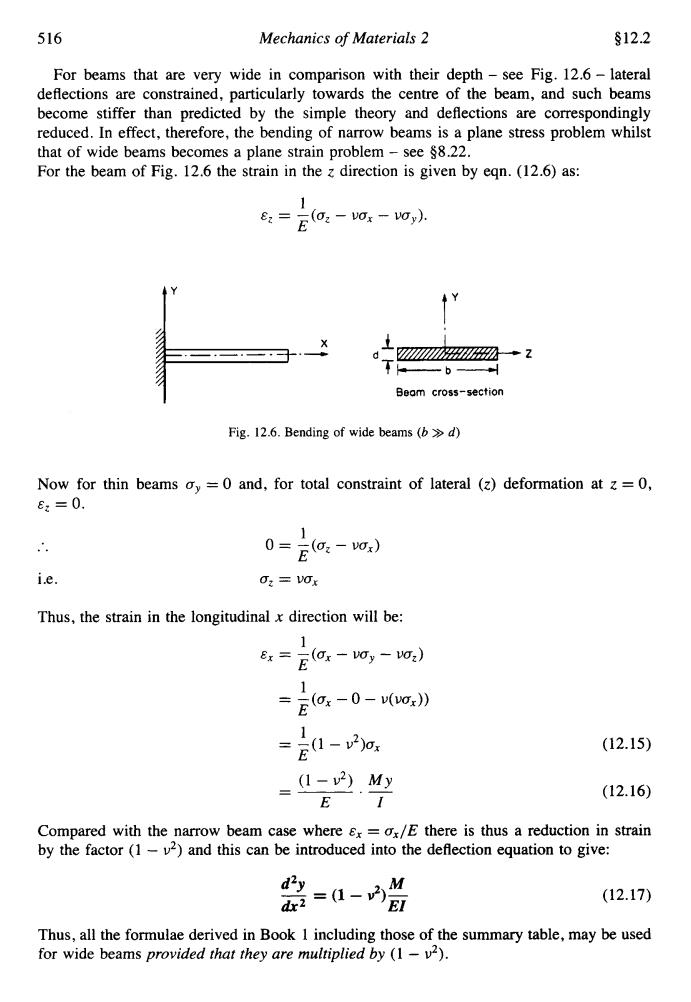正在加载图片...

516 Mechanics of Materials 2 §12.2 For beams that are very wide in comparison with their depth-see Fig.12.6-lateral deflections are constrained,particularly towards the centre of the beam,and such beams become stiffer than predicted by the simple theory and deflections are correspondingly reduced.In effect,therefore,the bending of narrow beams is a plane stress problem whilst that of wide beams becomes a plane strain problem-see $8.22. For the beam of Fig.12.6 the strain in the z direction is given by eqn.(12.6)as: E(0:-vax-vay). 7HH2◆2 T一b Beam cross-section Fig.12.6.Bending of wide beams (bd) Now for thin beams oy =0 and,for total constraint of lateral (z)deformation at z=0, ex=0. 1 0=Ea:-o,) ie. 0:=0x Thus,the strain in the longitudinal x direction will be: 1 Ex=E(ox -voy-vo:) 1 ox-0-(o》 =-加 (12.15) = (1-v2)My (12.16) E 1 Compared with the narrow beam case where er=ox/E there is thus a reduction in strain by the factor(1-v2)and this can be introduced into the deflection equation to give: =a-尚 d2y dr2 (12.17) Thus,all the formulae derived in Book 1 including those of the summary table,may be used for wide beams provided that they are multiplied by (1-v).516 Mechanics of Materials 2 $12.2 For beams that are very wide in comparison with their depth - see Fig. 12.6 - lateral deflections are constrained, particularly towards the centre of the beam, and such beams become stiffer than predicted by the simple theory and deflections are correspondingly reduced. In effect, therefore, the bending of narrow beams is a plane stress problem whilst that of wide beams becomes a plane strain problem - see 98.22. For the beam of Fig. 12.6 the strain in the z direction is given by eqn. (12.6) as: 1 E - -(az - wax - way). Z-E tY t’ Beam cross-section ‘I Fig. 12.6. Bending of wide beams (b >> d) Now for thin beams cry = 0 and, for total constraint of lateral (z) deformation at z = 0, E, = 0. i.e. 1 E 0 = -(az - wa,) a, = wax Thus, the strain in the longitudinal x direction will be: 1 E E, = -(a, - uay - wa,) 1 E = -(a, - 0 - u(uax)) (12.15) 1 E = -(1 - w2)ax (1 - u2) My - ___.- E I (12.16) Compared with the narrow beam case where E, = a,/E there is thus a reduction in strain by the factor (1 - w2) and this can be introduced into the deflection equation to give: d2Y M - = (1 - 2)- dx2 EI (12.17) Thus, all the formulae derived in Book 1 including those of the summary table, may be used for wide beams provided that they are multiplied by (1 - u’)